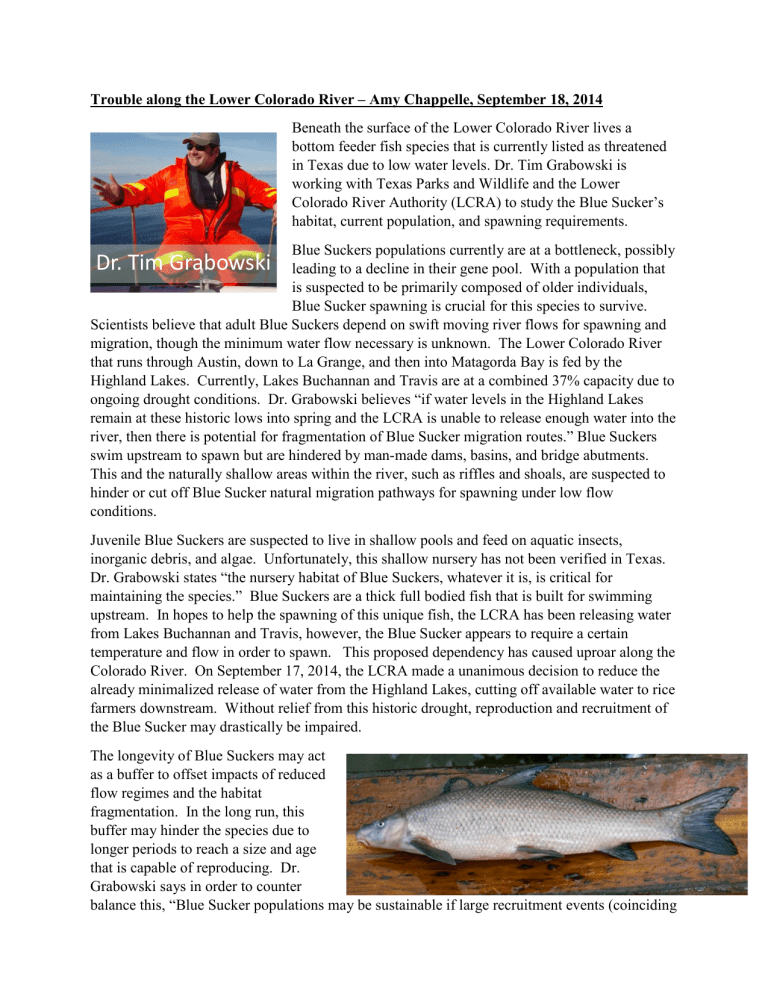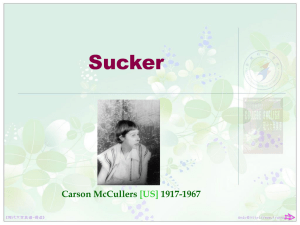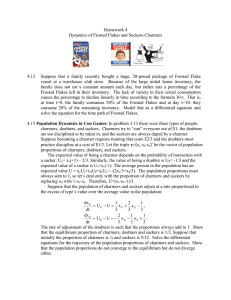Trouble along the Lower Colorado River – Amy Chappelle, September... Beneath the surface of the Lower Colorado River lives a

Trouble along the Lower Colorado River – Amy Chappelle, September 18, 2014
Beneath the surface of the Lower Colorado River lives a bottom feeder fish species that is currently listed as threatened in Texas due to low water levels. Dr. Tim Grabowski is working with Texas Parks and Wildlife and the Lower
Colorado River Authority (LCRA) to study the Blue Sucker’s habitat, current population, and spawning requirements.
Dr. Tim Grabowski
Blue Suckers populations currently are at a bottleneck, possibly leading to a decline in their gene pool. With a population that is suspected to be primarily composed of older individuals,
Blue Sucker spawning is crucial for this species to survive.
Scientists believe that adult Blue Suckers depend on swift moving river flows for spawning and migration, though the minimum water flow necessary is unknown. The Lower Colorado River that runs through Austin, down to La Grange, and then into Matagorda Bay is fed by the
Highland Lakes. Currently, Lakes Buchannan and Travis are at a combined 37% capacity due to ongoing drought conditions. Dr. Grabowski believes “if water levels in the Highland Lakes remain at these historic lows into spring and the LCRA is unable to release enough water into the river, then there is potential for fragmentation of Blue Sucker migration routes.” Blue Suckers swim upstream to spawn but are hindered by man-made dams, basins, and bridge abutments.
This and the naturally shallow areas within the river, such as riffles and shoals, are suspected to hinder or cut off Blue Sucker natural migration pathways for spawning under low flow conditions.
Juvenile Blue Suckers are suspected to live in shallow pools and feed on aquatic insects, inorganic debris, and algae. Unfortunately, this shallow nursery has not been verified in Texas.
Dr. Grabowski states “the nursery habitat of Blue Suckers, whatever it is, is critical for maintaining the species.” Blue Suckers are a thick full bodied fish that is built for swimming upstream. In hopes to help the spawning of this unique fish, the LCRA has been releasing water from Lakes Buchannan and Travis, however, the Blue Sucker appears to require a certain temperature and flow in order to spawn. This proposed dependency has caused uproar along the
Colorado River. On September 17, 2014, the LCRA made a unanimous decision to reduce the already minimalized release of water from the Highland Lakes, cutting off available water to rice farmers downstream. Without relief from this historic drought, reproduction and recruitment of the Blue Sucker may drastically be impaired.
The longevity of Blue Suckers may act as a buffer to offset impacts of reduced flow regimes and the habitat fragmentation. In the long run, this buffer may hinder the species due to longer periods to reach a size and age that is capable of reproducing. Dr.
Grabowski says in order to counter balance this, “Blue Sucker populations may be sustainable if large recruitment events (coinciding
with “ideal” conditions for reproduction) only occur at infrequent intervals.” This is a very resilient species that, though in decline in the Colorado River, have managed to preserve despite alterations to its habitat.
Dr. Grabowski is collecting samples to determine the age of each fish collected, as well as
“calculate how large the fish was at each age and how much it grew per year.” This information will give insight to how the fish are responding to environmental factors such as climate change and river discharges. The survival of Blue Suckers is necessary to the river ecosystem of the
Lower Colorado River. “The loss of the Blue Sucker from Texas rivers would be an irrevocable step in the transformation of our large rivers, a huge component of our history and natural heritage, to a means of moving water from one reservoir to another, as these fish really epitomize the big river ecosystem.” There is still a considerable amount of data to be collected and sorted to make the necessary conservation and management changes to keep a viable ecosystem alive for Blue Suckers and other species in the Colorado River. Dr. Tim Grabowski’s passion for Blue
Suckers is apparent and encourages him to continue his work to keep this beautiful species alive and viable.



